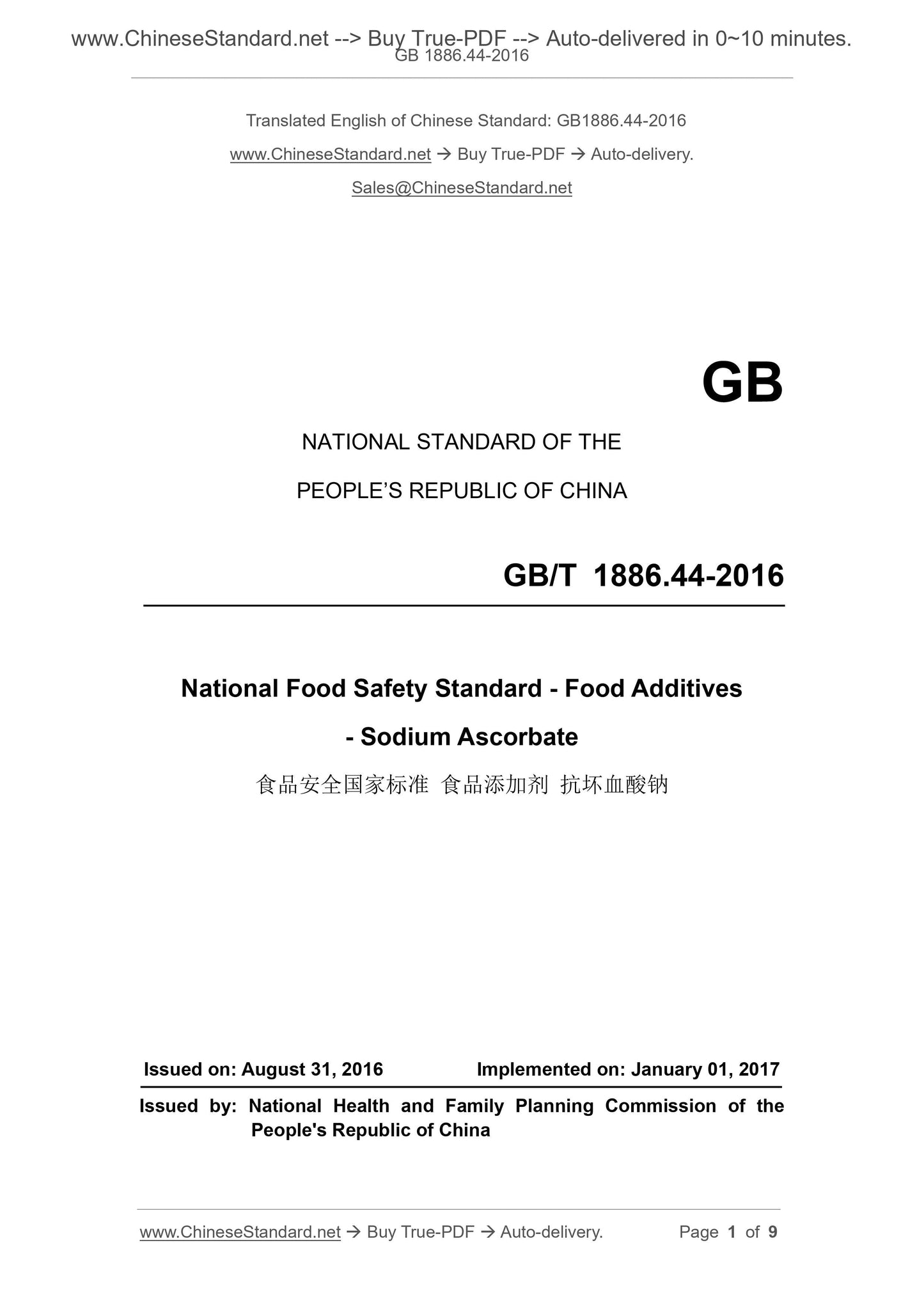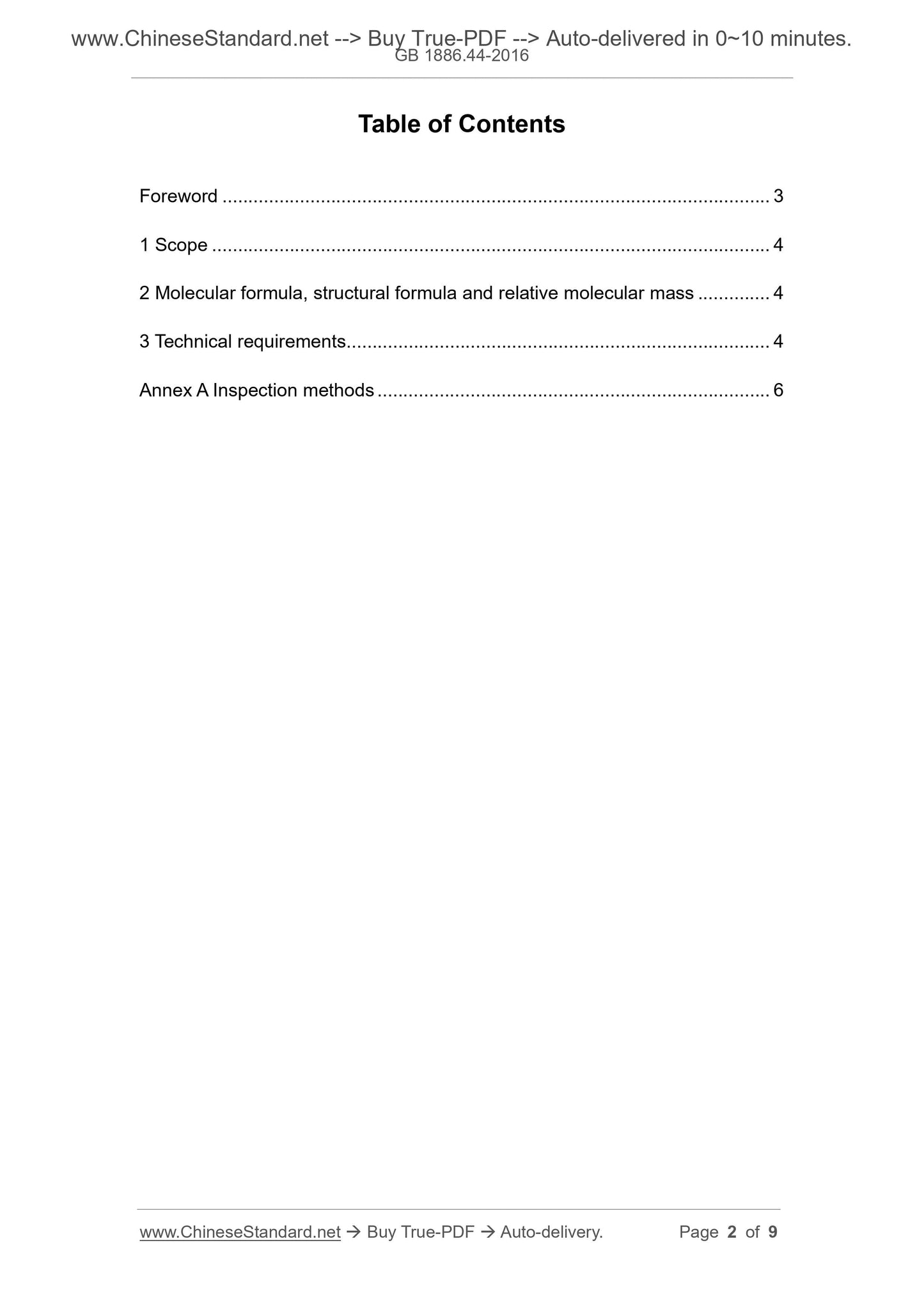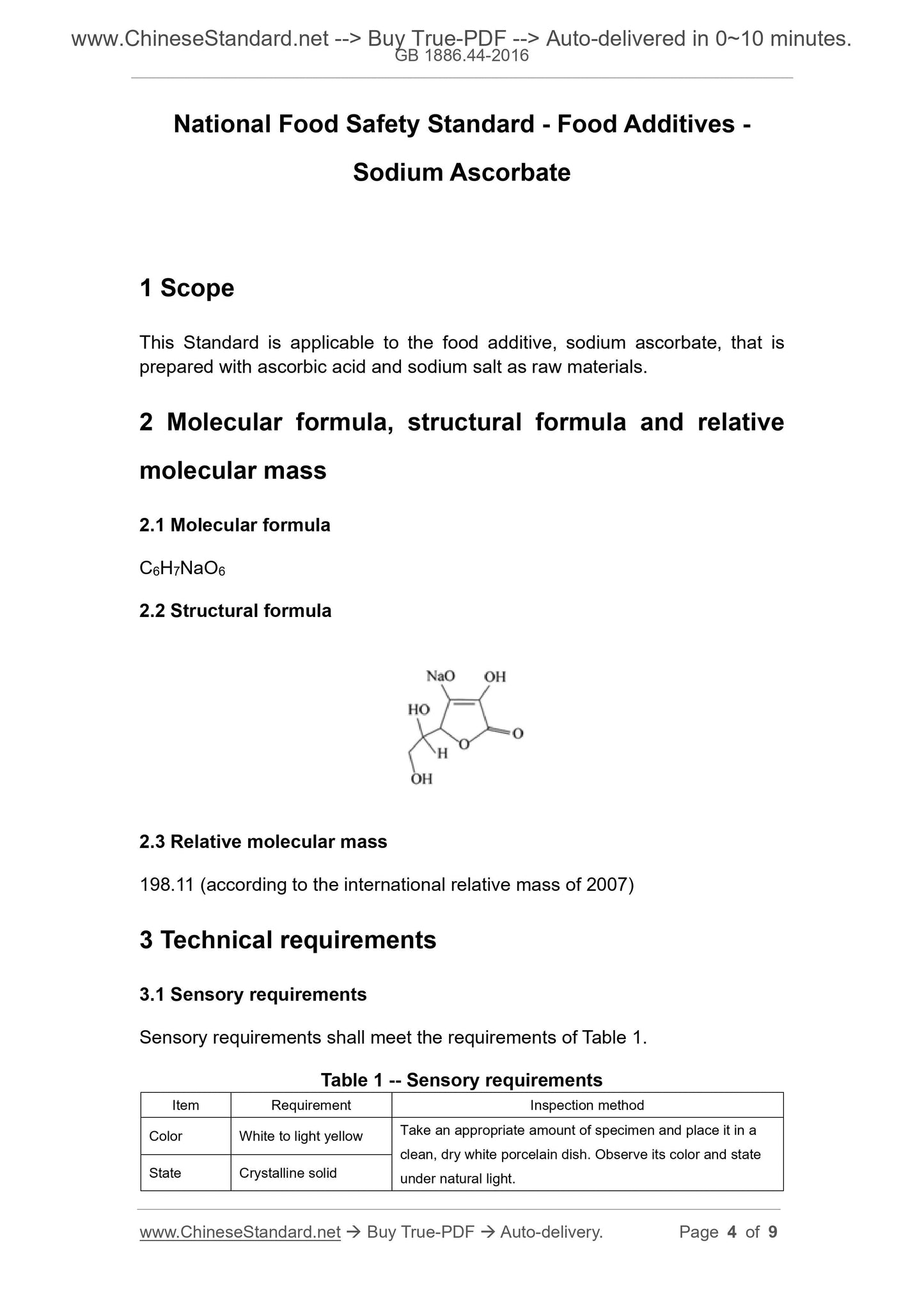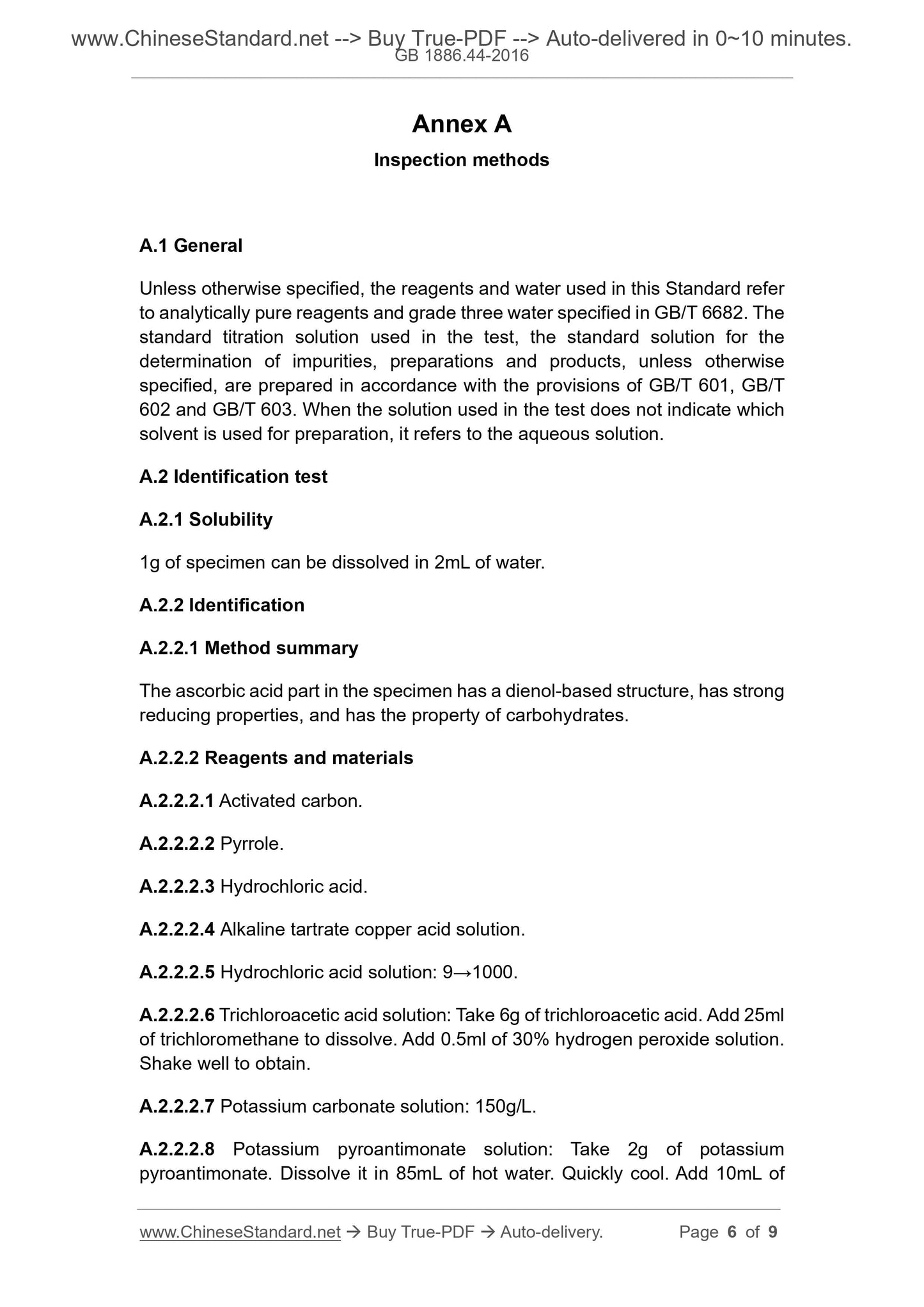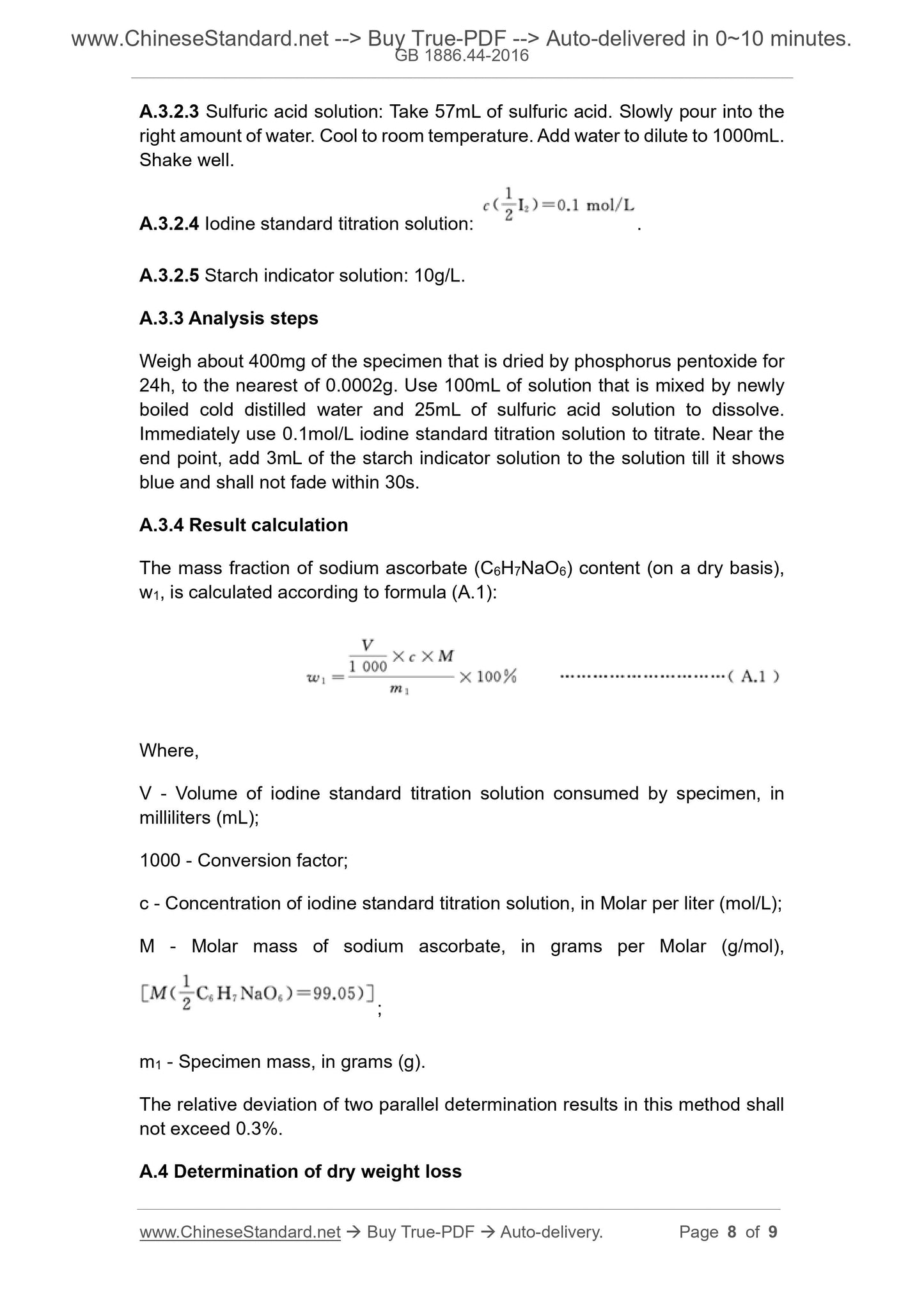1
/
of
5
www.ChineseStandard.us -- Field Test Asia Pte. Ltd.
GB 1886.44-2016 English PDF
GB 1886.44-2016 English PDF
Regular price
$110.00
Regular price
Sale price
$110.00
Unit price
/
per
Shipping calculated at checkout.
Couldn't load pickup availability
GB 1886.44-2016: Food additive -- Sodium ascorbate
Delivery: 9 seconds. Download (and Email) true-PDF + Invoice.Get Quotation: Click GB 1886.44-2016 (Self-service in 1-minute)
Newer / historical versions: GB 1886.44-2016
Preview True-PDF
Scope
This Standard is applicable to the food additive, sodium ascorbate, that isprepared with ascorbic acid and sodium salt as raw materials.
Basic Data
| Standard ID | GB 1886.44-2016 (GB1886.44-2016) |
| Description (Translated English) | Food additive -- Sodium ascorbate |
| Sector / Industry | National Standard |
| Classification of Chinese Standard | X42 |
| Word Count Estimation | 7,717 |
| Date of Issue | 2016-08-31 |
| Date of Implementation | 2017-01-01 |
| Older Standard (superseded by this standard) | GB 16313-1996 |
| Regulation (derived from) | Announcement of the State Administration of Public Health and Family Planning 2016 No.11 |
| Issuing agency(ies) | National Health and Family Planning Commission of the People's Republic of China, State Food and Drug Administration |
Share
